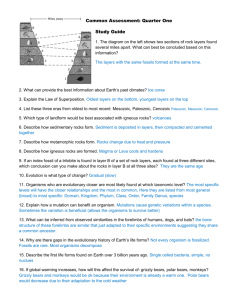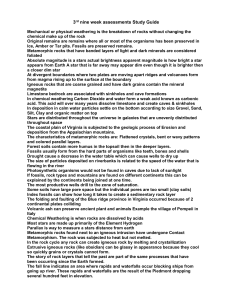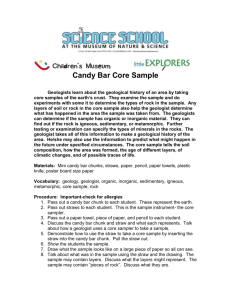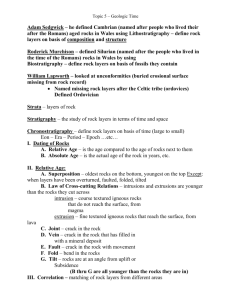Geology Worksheet: Rocks, Volcanoes, and the Rock Cycle
advertisement
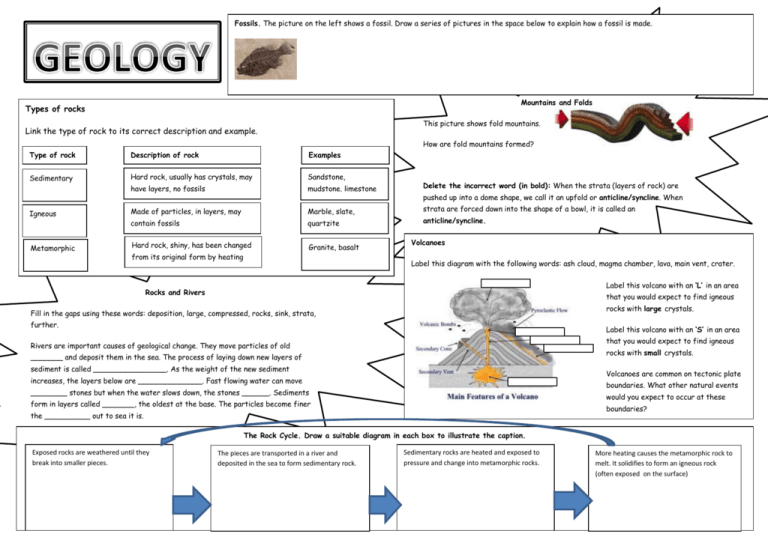
Fossils. The picture on the left shows a fossil. Draw a series of pictures in the space below to explain how a fossil is made. Mountains and Folds Types of rocks This picture shows fold mountains. Link the type of rock to its correct description and example. How are fold mountains formed? Type of rock Description of rock Examples Sedimentary Hard rock, usually has crystals, may Sandstone, have layers, no fossils mudstone. limestone Delete the incorrect word (in bold): When the strata (layers of rock) are Igneous Made of particles, in layers, may Marble, slate, strata are forced down into the shape of a bowl, it is called an contain fossils quartzite Metamorphic Hard rock, shiny, has been changed Granite, basalt from its original form by heating pushed up into a dome shape, we call it an upfold or anticline/syncline. When anticline/syncline. Volcanoes Label this diagram with the following words: ash cloud, magma chamber, lava, main vent, crater. Label this volcano with an ‘L’ in an area Rocks and Rivers that you would expect to find igneous rocks with large crystals. Fill in the gaps using these words: deposition, large, compressed, rocks, sink, strata, further. Label this volcano with an ‘S’ in an area that you would expect to find igneous Rivers are important causes of geological change. They move particles of old rocks with small crystals. _______ and deposit them in the sea. The process of laying down new layers of sediment is called ________________. As the weight of the new sediment Volcanoes are common on tectonic plate increases, the layers below are ______________. Fast flowing water can move boundaries. What other natural events ________ stones but when the water slows down, the stones ______. Sediments would you expect to occur at these form in layers called _______, the oldest at the base. The particles become finer boundaries? the __________ out to sea it is. The Rock Cycle. Draw a suitable diagram in each box to illustrate the caption. Exposed rocks are weathered until they break into smaller pieces. The pieces are transported in a river and deposited in the sea to form sedimentary rock. Sedimentary rocks are heated and exposed to pressure and change into metamorphic rocks. More heating causes the metamorphic rock to melt. It solidifies to form an igneous rock (often exposed on the surface)








